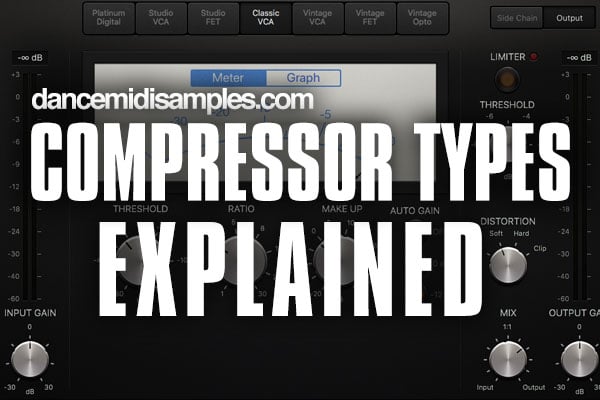
Understanding Audio Compression Types: A Complete Guide
Understanding Audio Compression Types: A Complete Guide
Compression is a crucial technique in audio production that reduces the dynamic range of sound, creating a “tighter” feel and making space in your mix. It can be used creatively for effects like the classic side-chain “pumping” effect heard in many dance tracks, as well as for more technical applications such as parallel compression, which is particularly useful for drum mixes.
These invaluable tools have been in use since 1937, beginning with the introduction of the ‘Western Electric 110 limiting amplifier’, the first commercially available audio compressor. Here’s a quick refresher on compressor controls and their functions:
Key Compressor Controls
- Threshold: The level at which compression begins to take effect.
- Ratio: Determines how much compression is applied. For instance, in a 6:1 ratio, the input signal must exceed the threshold by 6 dB for the output to increase by just 1 dB.
- Attack: The speed at which the compressor begins to work after the signal exceeds the threshold.
- Release: The speed at which the compressor stops working after the signal falls below the threshold.
- Knee: Controls the transition into compression once the threshold is crossed—hard knee applies compression immediately, while soft knee does so gradually.
- Make-Up Gain: Boosts the output level of a compressed signal since compression can reduce overall volume.
- Output: Adjusts the final output level from the compressor.
The character of a compressor is influenced by its design and method of gain attenuation. Here’s a rundown of common compressor types:
Types of Audio Compressors
Optical Compressors
Optical compressors use a light source and a photosensitive cell to control attenuation. As signal levels increase, the light’s brightness causes the signal to be attenuated. They respond quickly to transient signals, resulting in a gentle leveling effect.
Tube Compressors
Tube compressors utilize vacuum tubes to control gain through varying voltage from the side-chain. They add harmonic distortion and are characterized by slower response times, often designed with soft-knee layouts that provide musical compression.
FET Compressors
Field Effect Transistor (FET) compressors offer rapid control of gain reduction, making them ideal for percussive material. They feature quick attack and release times, capturing even the most dynamic signals while adding pleasing distortion at higher levels.
VCA Compressors
Voltage Controlled Amplifier (VCA) compressors utilize varying voltage inputs to control gain, enabling a wide range of settings. They are often more affordable and versatile than other types, delivering precision and transparency in sound.
Conclusion
For some of the best VST/AU compressor effects available, visit softube.com.